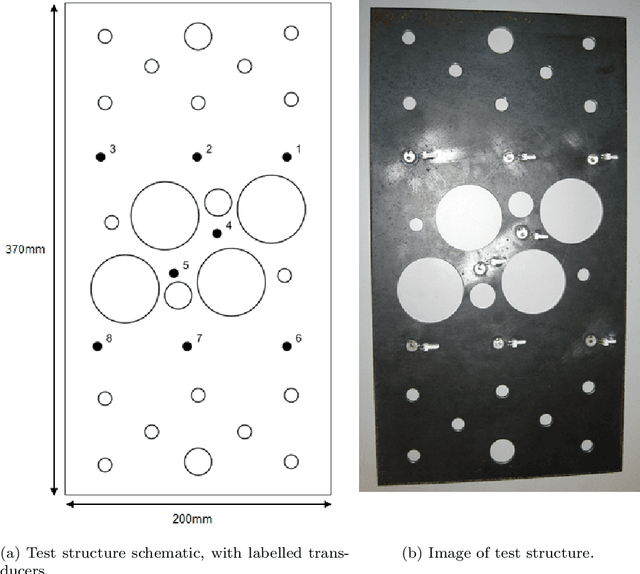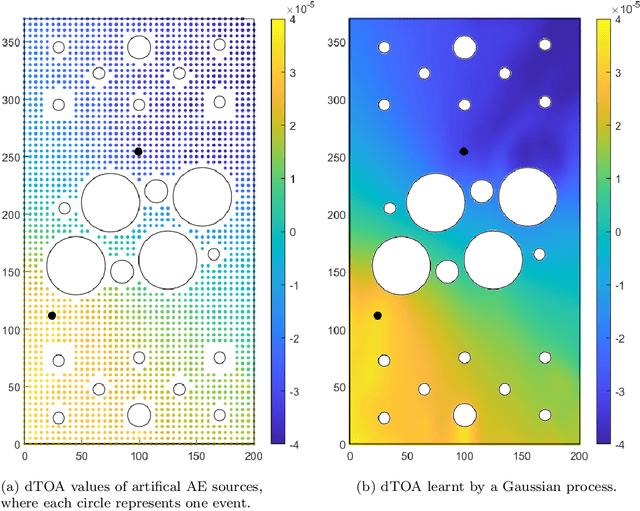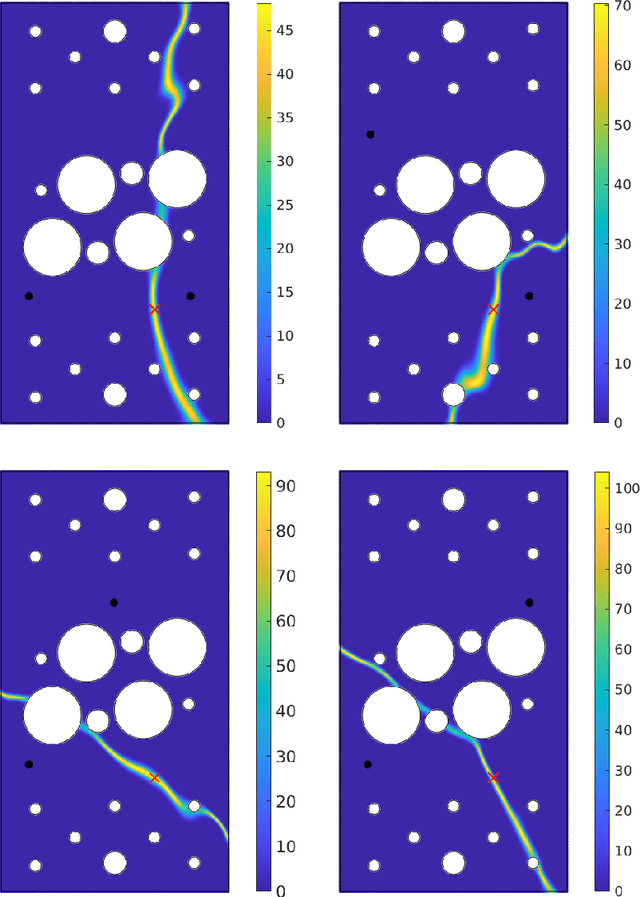A Bayesian methodology for localising acoustic emission sources in complex structures
Paper and Code
Dec 21, 2020



In the field of structural health monitoring (SHM), the acquisition of acoustic emissions to localise damage sources has emerged as a popular approach. Despite recent advances, the task of locating damage within composite materials and structures that contain non-trivial geometrical features, still poses a significant challenge. Within this paper, a Bayesian source localisation strategy that is robust to these complexities is presented. Under this new framework, a Gaussian process is first used to learn the relationship between source locations and the corresponding difference-in-time-of-arrival values for a number of sensor pairings. As an acoustic emission event with an unknown origin is observed, a mapping is then generated that quantifies the likelihood of the emission location across the surface of the structure. The new probabilistic mapping offers multiple benefits, leading to a localisation strategy that is more informative than deterministic predictions or single-point estimates with an associated confidence bound. The performance of the approach is investigated on a structure with numerous complex geometrical features and demonstrates a favourable performance in comparison to other similar localisation methods.
 Add to Chrome
Add to Chrome Add to Firefox
Add to Firefox Add to Edge
Add to Edge